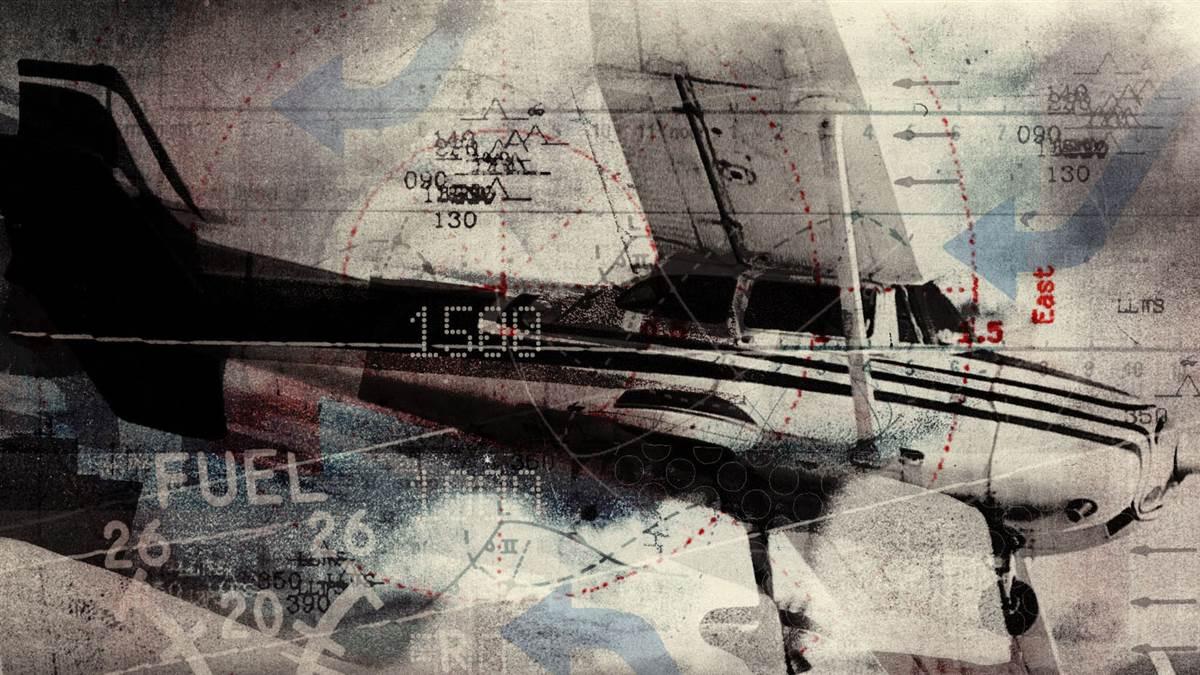Flight Lesson: No return
Options dwindle above the clouds
By Liam McClain
The flight was planned: My granddad and I were going depart from Olympia Regional Airport (OLM), climb above the clouds, and head over to the Olympic Mountains for some sightseeing in a Cessna 172.

Clouds were forecast to stay broken to scattered. What concerned me was the wind: It had been around 15 knots all afternoon. This made me hesitant as I had very little crosswind practice, and at the time I had fewer than 60 total flight hours. On the other hand, my granddad was only in town for two days to see me graduate high school, which may have affected my final go/no-go decision.
By 3:45 p.m. local time, I had completed my preflight and runup and everything was working fine. The wind was 13 knots almost directly down Runway 26, and was supposed to die down as the day went on.
We found some good-sized bumps on the climbout, but it was nothing to worry about. After climbing over the clouds, I showed my granddad the controls and pointed him toward the Olympic Mountains.
It was beautiful up there. From 2,000 feet above the highest peak we could see almost the entire mountain range.
After an hour or so of flying around the mountains, I decided to head home. To the south, it looked like it had turned to full overcast. Even the slight possibility of running out of fuel while looking for a hole in the clouds was enough to deter me from trying to get home that way. North of the mountains, the Port Angeles area looked to have scattered clouds. I decided to get under the ceiling over there, then fly by the base of the mountains and over the Hood Canal back to Olympia.
As soon as we got under the clouds, we started to get some big bumps, much bigger than we had encountered at Olympia. I tuned to the Port Angeles (CLM) ASOS, which said winds were two-four-zero at one-three, gusts to one. I was confused. How can wind be gusting to one knot? It never clicked that the wind was gusting two-one (21) knots.
Around the base of the mountains, the conditions were getting sketchy and the turbulence wasn’t letting up—but I knew that if things didn’t worsen we would be back in Olympia in less than an hour. Turning south around the foothills of the mountains revealed exactly what I didn’t want to see: A low cloud layer loomed ahead with something pouring out of it. I looked at my sectional. We were five miles north of the top of the Hood Canal, and I couldn’t see the water through the weather ahead. I won’t pretend scud-running didn’t cross my mind, but reason quickly took over. The temperature/dew point spread at Port Angeles was 4 degrees, telling me that those clouds were likely at 2,000 feet. The sectional shows some of the terrain in the area going up to 1,000 feet, and the visibility was, at best, less than five miles. I turned around. Fuel was now a bigger factor. I had departed with 3.5 hours and it had been almost two hours since takeoff.
I came up with three options. I could fly the other way around the Olympics to get back to Olympia, but I didn’t have enough fuel. Option two would be looking for a hole in the clouds at Olympia; however, if I couldn’t find a way to get back down, I wouldn’t have enough fuel to get back to clear skies. The only other option was to fly back to Port Angeles and land.
Once within 10 miles of the airport, I checked the ASOS again—same report as earlier. Nobody was in the pattern or nearby so I decided straight in for Runway 26 would be best. The turbulence got much worse as I descended. I was doing my best just to keep the wings level. The entire time it seemed like we were moving at half the ground speed we should have been; at the two-mile mark I realized that the 20 degrees of flaps I had added were only making things worse. I slowly retracted the flaps, but then we started getting windshear. One second the airplane was indicating 65 knots, then 95 knots, then a few seconds later it was down to 60. The final mile seemed to last 15 minutes. Eventually I made it to the runway and flared. We floated much longer than I expected, and it seemed that we weren’t even moving over the pavement. Finally, the wheels touched down. I was flooded with relief. I looked over at my granddad—he appeared amazingly calm.
After finding a tiedown, I called the FBO that rented the airplane. The woman working there looked up the METAR for Port Angeles and it had just been updated—wind was gusting to 29 knots. I decided to find a motel for the night and bring the airplane home in the morning. My granddad would get a ride back to Olympia that night.
Looking back, it’s easy to find mistakes: Trusting the weather forecast and risking VFR over the clouds would be the obvious one. The second mistake would be flying into Port Angeles while not being briefed on the weather for the area. At any point I could have called flight service, but the thought didn’t cross my mind. Aside from those two mistakes, I think I did the best I could have with the cards I was handed, and I’m proud that the worst thing to come out of that situation was spending the night in a run-down motel.
 "If I couldn’t find a way to get back down, I wouldn’t have enough fuel to get back to clear skies."
"If I couldn’t find a way to get back down, I wouldn’t have enough fuel to get back to clear skies."

